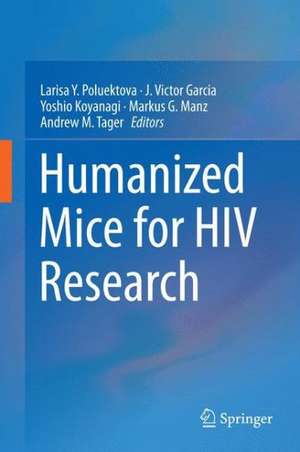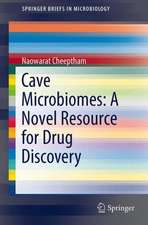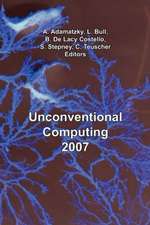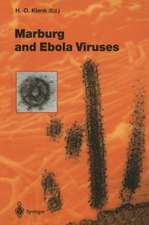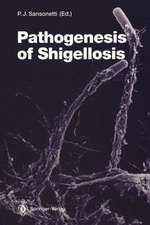Humanized Mice for HIV Research
Editat de Larisa Y. Poluektova, J. Victor Garcia, Yoshio Koyanagi, Markus G. Manz, Andrew M. Tageren Limba Engleză Hardback – 19 feb 2015
Humanized Mice for HIV Research provides a comprehensive presentation of the history, evolution, applications, and current state of the art of this unique animal model. An expansion of twelve review articles that were published in Humanized Mice by Springer in 2008 (Eds: Nomura T, Watanabe T, Habu S), this book expertly captures the outstanding progress that has been made in the development, improvement, implementation, and validation of humanized mouse models. The first two parts of this book cover the basics of human-to-mouse xenotransplantation biology, and provide critical information about human immune cell development and function based on individual models created from different immunodeficient strains of mice. The third and fourth parts investigate HIV-1 biology, including different routes of transmission, prevention, treatment, pathogenesis, and the development of adaptive immunity in humanized mice. The fifth part shows the broad applicability of humanized mice for therapeutic development, from long-acting antiretroviral combinations to genetic manipulations with human cells and cell-based approaches. The sixth part includes liver tissue engineering and the expansion of humanized mice for many other human cell-tropic pathogens.
| Toate formatele și edițiile | Preț | Express |
|---|---|---|
| Paperback (1) | 1108.72 lei 6-8 săpt. | |
| Springer – 5 oct 2016 | 1108.72 lei 6-8 săpt. | |
| Hardback (1) | 1116.00 lei 6-8 săpt. | |
| Springer – 19 feb 2015 | 1116.00 lei 6-8 săpt. |
Preț: 1116.00 lei
Preț vechi: 1174.74 lei
-5% Nou
Puncte Express: 1674
Preț estimativ în valută:
213.58€ • 222.15$ • 176.32£
213.58€ • 222.15$ • 176.32£
Carte tipărită la comandă
Livrare economică 14-28 aprilie
Preluare comenzi: 021 569.72.76
Specificații
ISBN-13: 9781493916542
ISBN-10: 1493916548
Pagini: 300
Ilustrații: XXI, 538 p. 54 illus., 45 illus. in color.
Dimensiuni: 155 x 235 x 35 mm
Greutate: 0.96 kg
Ediția:2014
Editura: Springer
Colecția Springer
Locul publicării:New York, NY, United States
ISBN-10: 1493916548
Pagini: 300
Ilustrații: XXI, 538 p. 54 illus., 45 illus. in color.
Dimensiuni: 155 x 235 x 35 mm
Greutate: 0.96 kg
Ediția:2014
Editura: Springer
Colecția Springer
Locul publicării:New York, NY, United States
Public țintă
ResearchCuprins
Mamoru Ito's Vision for the Future of Humanized Mouse Models.- Part I. Mouse genetic background and human hematopoietic stem cells biology.- Humanized Mice as Models for Human Disease.- Role of mouse innate immunity in immunodeficient mice for xenotransplantation.- Mouse genetic background and human hematopoietic stem cells biology; tips for humanization.- Biology of Human Hematopoietic Stem Cell Xenotransplantation in Mice.- Impact of the mouse IL-2Rg chain on lymphoid tissue development and human reconstitution in immunodeficient mice.- BM hematopoietic niche occupancy defect of HSC in scid mice.- Improvement of human multilineage hematopoietic engraftment by cytokine knockin replacement in human-hemato-lymphoid system mice.- Part II. SECTION 2: Understanding of human immune cells development and function in mouse environment.- Cytokine species-specificity and humanized mice.- Human T cell biology in a mouse environment.- Thymic education of human T cells and regulatory T cell development in humanized mice.- Human B cell development in a mouse environment.- The analysis of the functions of human B and T cells in humanized NOG mice.- NK cell development in human immune system (HIS) mice and their role in HIV pathogenesis.- Maintenance and function of human CD8+ T cells and NK cells in humanized mice.- Phenotypical and functional properties of antigen-presenting cells derived from humanized mice.- Part III: Humanized mice for HIV-1 virus biology and pathogenesis. Is it possible to address?.- Humanized mouse versus non-human primate models of HIV-1 infection.- Host factor-mediated resistance to HIV-1 infection.- Vaginal and Rectal HIV Transmission in Humanized Mice.- Oral HIV-1 Transmission in BLT Humanized Mice.- Selective infection of CD4+ memory T cells.- Development and function of human CD4+CD25+FOXP3+ regulatory T cells in humanized mouse and HIV-1 infection.- Role of TLR signaling in HIV-1-induced adaptive immune activation.- Latent HIV-1 infection of resting CD4+ T cells: Testing approaches to overcome HIV latency.- Brain HIV-1 infection modeling in humanized mice.- Part IV. Humanized mice for HIV-1-specific adaptive cellular and humoral immune responses.- Antibody-based protection against HIV infection.- B-cell responses in humanized mice: the glass is half full.- Part V. Therapeutics developments for HIV-1.- Species similarities and differences in pharmacokinetics and distribution of antiretroviral drugs.- Anti-Retroviral Treatment Testing in HIV-Infected Humanized Mice.- Humanized Mice as a Platform for the Development of Long-Acting Nanoformulated Antiretroviral Therapy.- Targeted delivery of aptamers and siRNAs for HIV prevention and therapies in humanized mice.- Zinc finger nuclease editing of hematopoietic stem cells as an anti-HIV therapy.- Hematopoietic progenitor cell transduction by a unique short hairpin RNA to chemokine receptor 5.- Cell-based approaches for treating HIV infection.- A conditionally replicating human immunodeficiency virus in BRG-HIS mice.- Part VI. New models for other human-specific or human selective pathogens.- Dual reconstituted mice for hepatotropic pathogens.- Dengue viral pathogenesis and immune responses in humanized mice.- HIV-1 and TB: How Humanized Mice Can Help.- Epstein-Barr Virus Infection in Humanized Mice.- HTLV-1 infection of humanized NOD/SCID IL2 gc-/- and BALB/c-Rag2-/-gc-/- mouse models.- Plasmodium falciparum parasite development in humanized mice: liver and blood stages.- Part VII. New horizons in mouse humanization.- The Future is NOW for Humanized Mouse Models.
Recenzii
“Humanized Mice for HIV Research is a comprehensive overview of human immune engrafted mouse models as they apply to HIV, but also with relevance to other fields of study. … Although the work is titled, this book also includes a section on modeling other human specific/selection pathogens in human immune system mice. … Humanized Mice for HIV Research is an excellent reference, not just for HIV researchers, but also for anyone interested in working with immune engrafted models.” (Megan M. MacBride, Taconic Biosciences, taconic.com, January, 2016)
Notă biografică
Larisa Y. Poluektova, University of Nebraska Medical Center, Omaha, USA
J. Victor Garcia, University of North Carolina at Chapel Hill, USA
Yoshio Koyanagi, Kyoto University, Japan
Markus G. Manz, University Hospital Zürich, Switzerland
Andrew M. Tager, Massachusetts General Hospital and Ragon Institute of MGH, MIT and Harvard, USA).
J. Victor Garcia, University of North Carolina at Chapel Hill, USA
Yoshio Koyanagi, Kyoto University, Japan
Markus G. Manz, University Hospital Zürich, Switzerland
Andrew M. Tager, Massachusetts General Hospital and Ragon Institute of MGH, MIT and Harvard, USA).
Textul de pe ultima copertă
Over the last several years the field of humanized mice has matured and developed into an essential component of translational research for HIV/AIDS. Humanized mice serve both as vehicles for discovery and as highly sophisticated platforms for biomedical research. In addition, humanized mice have demonstrated outstanding potential for the investigation of critical aspects of the infection and pathogenesis of the hepatitis and herpes viruses, as well as highly relevant microbial infections such as tuberculosis and malaria.
Humanized Mice for HIV Research provides a comprehensive presentation of the history, evolution, applications, and current state of the art of this unique animal model. As an expansion of twelve review articles that were published in Humanized Mice by Springer in 2008 (Eds: Nomura T, Watanabe T, Habu S), this book expertly captures the outstanding progress that has been made in the development, improvement, implementation, and validationof humanized mouse models. The first two parts of this book cover the basics of human-to-mouse xenotransplantation biology, and provide critical information about human immune cell development and function based on individual models created from different immunodeficient strains of mice. The third and fourth parts investigate HIV-1 biology, including different routes of transmission, prevention, treatment, pathogenesis, and the development of adaptive immunity in humanized mice. The fifth part shows the broad applicability of humanized mice for therapeutic development, from long-acting antiretroviral combinations to genetic manipulations with human cells and cell-based approaches. The sixth part includes liver tissue engineering and the expansion of humanized mice for many other human cell-tropic pathogens.
About the Editors
The Editors have well-documented track records in each of the subject areas covered, including HIV neuropathogenesis and therapeutics (Larisa Y. Poluektova, University of Nebraska Medical Center, Omaha, USA), developing novel humanized mouse models and pioneering applications for HIV transmission, prevention, persistency and eradication (J. Victor Garcia, University of North Carolina at Chapel Hill, USA), retrovirology and host restriction factors (Yoshio Koyanagi, Center for Human Retrovirus Research, Institute for Virus Research, Kyoto University, Japan), hematopoiesis and cytokine transgenic expression (Markus G. Manz, Division of Hematology, University Hospital Zürich, Switzerland), and developing adaptive immunity to HIV in humanized mice (Andrew M. Tager, Center for Immunology and Inflammatory Diseases, Massachusetts General Hospital and Ragon Institute of MGH, MIT and Harvard, USA).
Humanized Mice for HIV Research provides a comprehensive presentation of the history, evolution, applications, and current state of the art of this unique animal model. As an expansion of twelve review articles that were published in Humanized Mice by Springer in 2008 (Eds: Nomura T, Watanabe T, Habu S), this book expertly captures the outstanding progress that has been made in the development, improvement, implementation, and validationof humanized mouse models. The first two parts of this book cover the basics of human-to-mouse xenotransplantation biology, and provide critical information about human immune cell development and function based on individual models created from different immunodeficient strains of mice. The third and fourth parts investigate HIV-1 biology, including different routes of transmission, prevention, treatment, pathogenesis, and the development of adaptive immunity in humanized mice. The fifth part shows the broad applicability of humanized mice for therapeutic development, from long-acting antiretroviral combinations to genetic manipulations with human cells and cell-based approaches. The sixth part includes liver tissue engineering and the expansion of humanized mice for many other human cell-tropic pathogens.
About the Editors
The Editors have well-documented track records in each of the subject areas covered, including HIV neuropathogenesis and therapeutics (Larisa Y. Poluektova, University of Nebraska Medical Center, Omaha, USA), developing novel humanized mouse models and pioneering applications for HIV transmission, prevention, persistency and eradication (J. Victor Garcia, University of North Carolina at Chapel Hill, USA), retrovirology and host restriction factors (Yoshio Koyanagi, Center for Human Retrovirus Research, Institute for Virus Research, Kyoto University, Japan), hematopoiesis and cytokine transgenic expression (Markus G. Manz, Division of Hematology, University Hospital Zürich, Switzerland), and developing adaptive immunity to HIV in humanized mice (Andrew M. Tager, Center for Immunology and Inflammatory Diseases, Massachusetts General Hospital and Ragon Institute of MGH, MIT and Harvard, USA).
Caracteristici
Features mouse-to-human xenotransplantation/cross-reactivity of immune systems Assesses the applicability of different mouse genetic backgrounds for humanization and human immune system function Written by doctors who have worked in many different areas of HIV-1 research Includes supplementary material: sn.pub/extras
